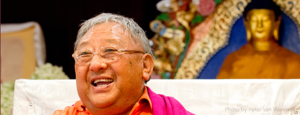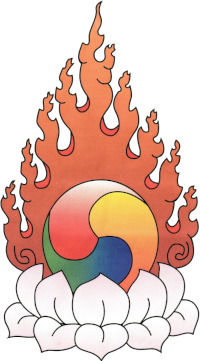When you are looking at the Buddha’s teaching, one thing that we have to remember. We may see the Collected Works, and of course some of us from the east Asian tradition will say that it is the Collected Works of the Buddha. But most scientific people in the world at large will call it the Buddhist Canon.
So this is what the teachings of Buddha are all about.
When you look very carefully, most of these teachings came because of incidents that took place. So, Buddha responds or gives guidance. It is not that Buddha sat down, thought about it, analyzed and researched, drew conclusions and then put out his ideas as a theory. It is all based on what he knew and experienced. Mostly, it is his experience of dealing against the negative emotions. Almost all of what we have as Buddha’s teachings today are like that.
Traditionally, it is said that there are 84,000 heaps of Buddha’s teachings. The measurement of a “heap,” is often said to be what one elephant can take. That would be huge – 84,000 elephant loads. But, whatever we have today is the Buddhist Canon or Buddha’s Collected Works. In Tibetan, that is just over 100 volumes. The Chinese version has more than that. It has 110 volumes. In South-East Asia they will accept mostly the Three Pitakas, not all of the sutras. The Three Pitakas contain the Buddha’s teachings on discipline, on meditation, and on wisdom. That’s all they will accept in South East Asia, in places like Sri Lanka, Thailand, etc. When Buddhism died in India during the Mogul period, it went to Sri Lanka, and then Ceylon and then it came back from there to India and the rest of them. Then there are other small areas such as Burma, Cambodia, Laos, Vietnam and so on. Chinese Buddhism is Mahayana Buddhism, and in Japan, Zen is also Mahayana Buddhism. Mahayana Buddhism accepts all sutras, and I think Tibetan Buddhism is the only one that accepts the Vajrayana. They say that there was Vajrayana in Thailand, but it was reserved for the royals and not anyone could have it.
One or two very senior and well-known ministers or generals might have been permitted to take some blessings in the whole history of Thailand. It was that secret. It was somehow made into a privilege of the royal family. In China it was a little more open, but still. Basically these are the Buddha’s teachings. There are so many. Many of them are like little koans, one little statement here, one there. So it is not that easy to organize for an individual to practice according to the tradition. All these traditions, Mahayana or Theravada or whatever, began to organize the teachings, making it convenient for an individual to listen, read and understand.
I am not going to go much into other traditions that I don’t know. Tibetan Buddhism is coming from the Indian Buddhist tradition, no question, very definitely, in particular the Northern India tradition. In the 900’s and up to the 1100’s there were two most important institutions in Northern Indian Buddhism. One was Nalanda, the most important institution of that time. Equally important was Vikramalashila. Nalanda was in what is now Bihar and Vikramalashila was in the Bengal area, next to Bangladesh. In those days there was a little kingdom called Sahor.
Tibetan Buddhism came from India to Tibet from 700 AD onwards. First when it came, we didn’t understand. The people simply worshipped some text that was presented to the king. It was made into an object of workshop, like an image. People were simply worshipping the text and there was a wooden statue of Avalokiteshvara. They didn’t understand the text. It was supposed to be dreamt by the king that within generations people would be able to read the book and understand. Till then, it was an object of worship. It was under seal, like some of holy objects in Rome. Then after 5 generations, they began to understand and more and more texts started coming from India, and were translated into Tibetan. Today, what is happening in the West is very similar.
–Gelek Rimpoche


